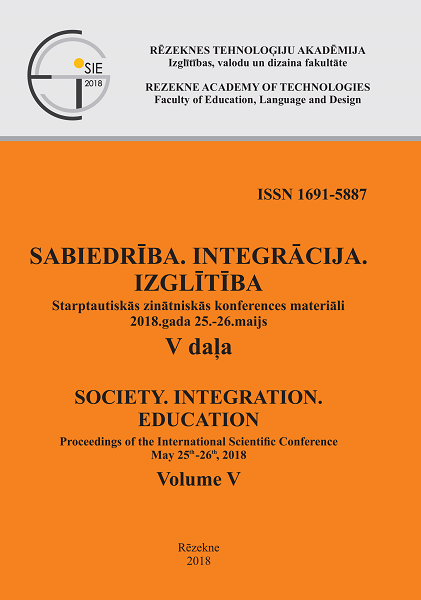HABITS OF USING INTERNET AND DIGITAL DEVICES IN EDUCATION
DOI:
https://doi.org/10.17770/sie2018vol1.3248Keywords:
education, e-study, Information Technologies, internet, users’ habits, digital devicesAbstract
According to Central Statistical Bureau data of 2017 at least 46.8% of Latvian population are involved in educational activities. Such digital devices as computers (both desktop computers and laptop computers), tablets, smartphones, book readers, etc. and the internet directly or indirectly are used in both formal and non-formal education. Digital devices can be used in training or study process, or some part of it directly, as well as students or training participants may be assigned tasks to be performed with these devices – searching for information, reading and learning e-material, writing articles, etc. In addition to statistical data research, two e-polls were conducted for respondents who are computer users in different age groups. Respondents were asked about their habits in using the internet and digital devices, additional interest was about which of the digital tools are used and for what purposes these devices are used. All answers have been analysed. The survey results show that the responses provided by the participants of the sample group are very close to the whole population, both for the use of the Internet and digital devices. The results also show the purpose of using digital devices, especially in education, and which devices are most commonly used for each purpose. More than 90% of respondents use digital devices to get information. In order to participate successfully in e-learning and e-studies, users need both good e-skills and well-designed e-learning materials: high-quality content, comfortable, easy-to-understand and comprehensible text, suitable formatting parameters of text.Downloads
References
CSB (2017). Centrālā statistikas pārvaldes dati. Retrieved from http://www.csb.gov.lv/dati/statistikas-datubazes-28270.html
Khan, M., K. (2013). Comprehensive Study on the Basis of Eye Blink, Suggesting Length of Text Line, Considering Typographical Variables the Way How to Improve Reading from Computer Screen. Advances in Internet of Things Vol.3 No.1.
Kemp, S. (2017). Digital in 2017: global overview. Retrieved from https://wearesocial.com/special-reports/digital-in-2017-global-overview
Martinez, G.V., & López-Río J., (2015). About the Horrific Peril of Reading on Digital Devices. Procedia - Social and Behavioral Sciences 00 (2015) 000–000
Miniwatts Marketing Group, (2017) Internet usage statistics. Retrieved from http://www.internetworldstats.com/stats.htm
Miniwatts Marketing Group, (2017) Internet Usage in the European Union. Retrieved from http://www.internetworldstats.com/stats9.htm
Olyslager, P. (2012). The Optimal Text Layout is More Than Line Length. Retrieved from https://www.paulolyslager.com/optimal-text-layout-line-length/
Report from We Are Social and Hootsuite, (2017). Global Digital Statshot Q3 2017. Retrieved from https://www.slideshare.net/wearesocialsg/digital-in-2017-global-overview
Saulles, D.M., (2015). Information 2.0: New models of information production, distribution, and consumption, Second edition, Facet Publishing, London.
Statista, (2017) Number of smartphone users worldwide from 2014 to 2020 in billions. Retrieved from https://www.statista.com/statistics/330695/number-of-smartphone-users-worldwide/
Vincent, J., & Haddon, L., (2018), Smartphone Cultures. Routledge, NY.


